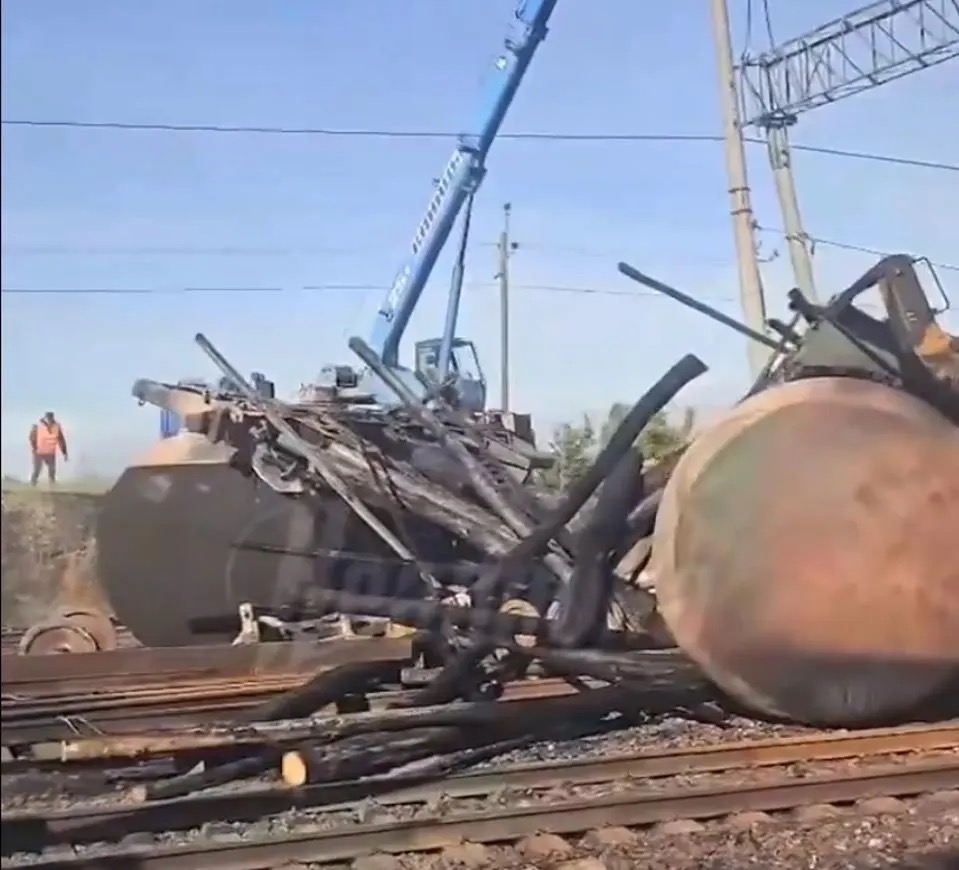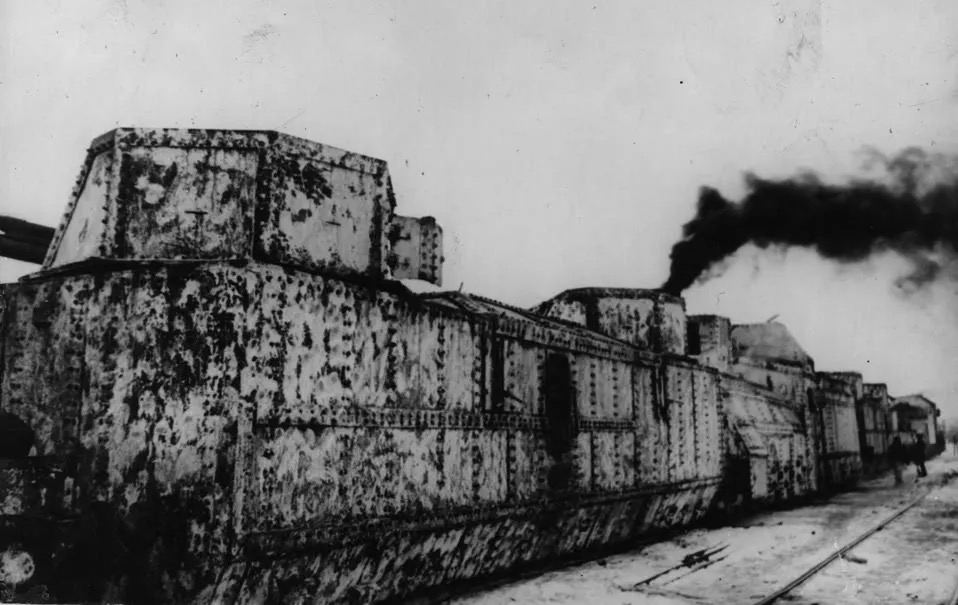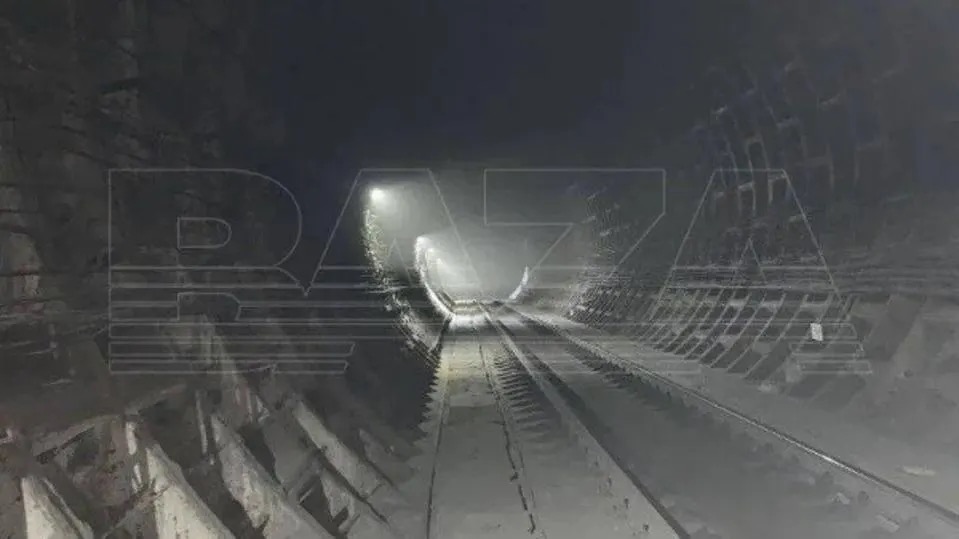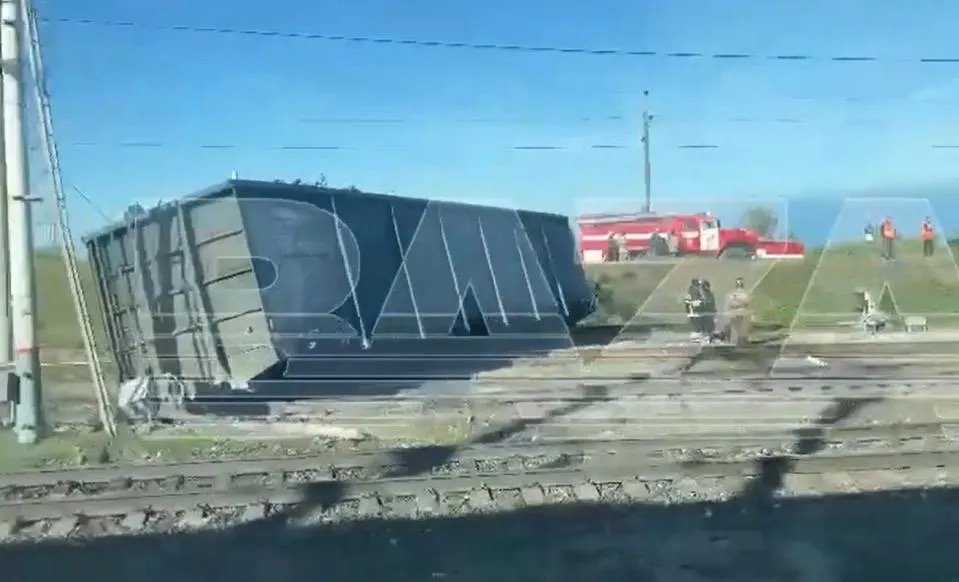A drone strike this week derailed a Russian freight train, burning a tank car and leaving others strewn across the line in what looks like the first ever successful drone attack on a train. This looks like an escalation of the assault on Russia’s vital railway network, hitting the Russian military’s vulnerable logistics.
Details are scant and there is little information available about the attack. But from the choice of target and the location some five hundred kilometers from the frontline, it will be setting off alarm bells all the way to the highest levels in the Kremlin.
Drone Meets Train

A video of the aftermath of the event is was posted on the Baza Telegram channel on May 14th. A passenger on a train passing the wreck filmed the derailed train, with the caption: “Video from the scene of a drone attack on a freight train in the Volgograd region. The drone crashed into a fuel tank, causing an explosion and a fire. 9 wagons derailed. There are no victims”
According to a report in Reuters from the same day, “A Ukrainian drone attack derailed a freight train and sparked a fire in a diesel tank in the southern Russian region of Volgograd, mangling several hundred metres of track.”
Another report suggests that at least one diesel tank exploded during the attack.
Reuters says Russian Railways stated simply saying that the derailment was caused by “interference by unauthorized persons” but Russian media said the train was attacked by a drone.
Whether the drone really came from Ukraine is questionable, for reasons we will explore later. But the first thing to consider is the significance of an attack on a train.
It is difficult to overstate the importance of the railways for Russian miliary logistics. While countries like the U.S. make heavy use of shipping and air transport, the Russian army is tied to its railways.
“More so than any other military, Russia’s ground forces rely on its expansive railway network to move troops and materiel across the country, “ starts a reportby the thinktank CNA on Russia’s transport backbone.
Russia is a huge country spreading across 11 time zones, served by over 50,000 miles of train lines. These form a dense web in the West, becoming progressively more sparse out in the thinly-populated regions but still tying the whole nation together so whole divisions can be moved by train from the Eastern Miliary District to the West.
Military transport requires close co-ordination with the state-owned Russian Railways. Moving a train requires planning, scheduling, routing, and the assignment of locomotives and rolling stock and there is a highly developed bureaucracy to manage the process. Every one of Russia’s 370 large railways stations has a staff of military officers to manage the process.

Russia has a unique military formation, the Railway Troops (also Zheleznodorozhniye Voiska or ZhV) founded in 1851. While they are most famous for operating armored trains, the Railway Troops are a corps of engineers with some 27,000 personnel responsible for construction, maintenance, repair and protection of lines as well as the routine operation of rail transport.
The deep reliance on railway logistics and the lack of alternatives was arguably one of the reasons for the failure of the initial invasion of Ukraine in 2022. In a paper for the Swedish Defence Research Agency entitled “A Railhead Too Far: The Strategic Role of Railroads during Russia’s Invasion of Ukraine ” Maria Engqvist suggests that because the Russian armed forces rely on rail transport, their failure to capture railheads in Ukraine and use the Ukrainian railroad infrastructure was “a determining factor for the development of the war.”
Significantly, Engqvist also notes that “Reliance on rail leaves the Russian Armed Forces vulnerable to sabotage and air strikes.”
Sabotage And Air Strikes
Saboteurs within Russia have been targeting the rail network since the invasion in hundreds of individual acts averaging two per week. A paper by John Daly for the Jamestown Foundation in January noted that since February 2022 Russian authorities had arrested 137 people for railway sabotage and charged them with treason and terrorism.
The paper notes the most effective action to day occurred in November 2023, when an explosion in a railway tunnel on the Baikal-Amur Railway in Siberia blocked the main railway route between Russia and China for some time. The Ukrainian Security Service claimed they were behind the attack several thousand miles from their territory.
“Ukraine’s continued disruption of Russia’s railway network will likely lead to further chaos as the effects of the war on the Russian home front are becoming more apparent,” Daly concludes.
In fact, Ukraine has recently taken to more direct action against the Russian railway network. On the night of May 2nd, Ukrainian long-range kamikaze drones targeted electricity substations serving railways in both the Kursk and Oryol regions, causing train delays.
The Railway Troops and Russian Railways can quickly repair minor damage from a few attacks. But at the number of attacks grows they may find it increasingly difficult to keep the trains running.
Whose Drone?
The Reuters report suggested that a Ukrainian drone hit the derailed train. This seems like a logical extension of the attacks on rail infrastructure, but hitting a moving train with a long-range kamikaze drone is a major challenge.
Like cruise missiles, long-range drones are pre-programmed with target co-ordinates and find their way using satellite navigation or other means. This is ideal for fixed targets like buildings or military facilities, but hitting a mobile target requires additional guidance. Similar munitions like anti-ship missiles rely on radar for terminal homing to locate and lock on to the target. Radar is less effective for ground targets due to the amount of clutter, but some Ukrainian drones are now equipped with optical seekers using machine vision. It is possible for a drone to navigate to the target area and then seek a train to attack, but Ukrainian sources tell me this would not be straightforward.
The other alternative is long-range drone control by a remote operator via a video link like a giant FPV kamikaze. This would take something like a Starlink satellite terminal, which has been seen on some Ukrainian drones previously. Poland is funding 20,000 Starlink devices in Ukraine and many of these may be on uncrewed platforms.
However, there is a simpler explanation. The drone may have been a smaller type launched from just a few miles away by increasingly sophisticated saboteurs.

Partisan Groups
I contacted a partisan who goes by the handle Medici, founder of the White Beargroup. These are fighters working behind the front like in occupied Ukraine and elsewhere. He is in contact with a number of other partisan groups, including Russians opposed to the Putin regime. These groups are now starting to work together more and sharing information about operations and tactics.
Medici could not comment on this specific action, but he says that shared information indicates that a number of groups are now starting to acquire both Mavic-type quadcopters for dropping grenades and FPV kamikazes, and training fighters in how to use them. These types of weapon will allow them to carry out attacks from much longer range than other weapons – even a basic quadcopter can drop bombs from a mile away – allowing them to bypass security measures and reducing the chances of getting caught.
A basic FPV kamikaze drone can carry a 1.5 kilo /three-pound warhead. While this might be too small for a good chance of success against a locomotive, it is more than enough to set fire to a tank car full of diesel fuel. The resulting explosion would be powerful enough to derail the train, another example of how a small drone can ‘bring the detonator’ and cause large-scale destruction.
Damage to railway lines is easily spotted, which is why saboteurs traditionally prefer to carry out an attack just before a train arrives to derail it. Adding drones to the equation makes defence virtually impossible: the attackers can be hiding miles from the railway, waiting to launch their drone when they are alerted that the train is coming. They may be stationed near a signal, hoping to catch the train while it is halted, but as we have seen, FPVs have no problem hitting fast-moving vehicles.
Like other drone operators, partisan groups are likely to share their experiences of what tactics and techniques work best. We may even see the emergence of drone warheads optimized for attacking trains, rails or other railway targets.
This attack is the first time a train has ever been derailed by a drone. But, as with other types of drone attack like the kamikaze drone boat strikes on Russian warships, in the coming months these incidents could become commonplace. That possibility must be keeping people in the Kremlin up at night — and making other railway operators wonder about the future.
Forbes



